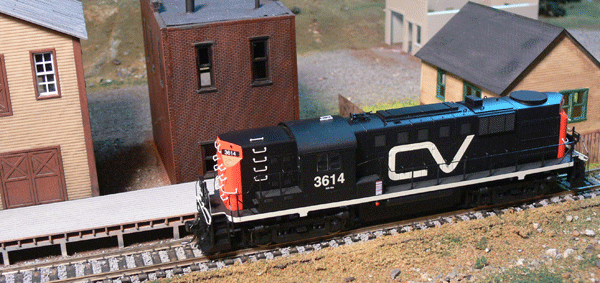Stymied
Work on the layout this weekend was stymied as my rail order arrived, incorrect. A simple picking error led to me getting weathered instead of un-weathered rail, not great for soldering turnouts.
While I wait for the correct rail to arrive, I installed the two TCS T1 decoders into a pair of life like proto 1000 RS-11s.

Fortunately for me, they had a great link of model specific installation photos. The installation was a snap; everything worked the first time. That was truly a first for me, and I was pretty excited. The soldering experience I've picked up from the Fast Tracks switches is really paying off! These locos run very well, very smooth (even at low speed), and have a lot of pulling power. Once weathered, and the plastic sheen turned down, they should be real work horses. I was able to consist and run them easily.
I also assembled three packages of Sergent couplers and only managed to lose about 4 springs and no ball bearings. These too are getting easier to put together with added experience. With those put together, I was able to not only Sergent equip these RS-11s, but another 8 cars in my fleet (I'm replacing hork hooks first, than going back over the Kadee compatibles).
I switched a couple of small trains last evening just for kicks, and there are a couple of things I've noticed now with the Sergents that I have them and have begun to use them.
The first thing is I love how they uncouple. I find that I am NOT fighting with the uncoupling process, simply reach in, hold the wand on top of the coupler, and reverse the loco, and voila. And right where I want the car.
The second thing I love about them is how they don't uncouple. Once they are mated, they stay hooked, no accidental disconnects over delayed magnets, etc.
The third thing is they way they look. Not only do they look better, but they make trains look better, as the coupler gap is smaller, and this is not a problem even over short turnouts and the one piece of 18" radius sectional track on my test layout, on locos like the RS11s and 50" cars.
The fourth thing I like is how they install, other than fighting with the spring (but you get better with experience), installation on almost anything is easier than with Kadees, as the height is not as vital.
The one drawback is coupling; the couplers do have to be aligned to couple successfully. This requires a bit of experience (and I'm getting better, so it's becoming less of a problem). Kadees couple easily most of the time, the Sergents do as well only if they're aligned, but will do so on tight curves. This became more apparent and more work when making new connections, ie a different locomotive or car connecting than what was there previously, which requires alignment. On my test layout the yard is in the middle of a 4x8, so reaching in to align things wasn't the easiest, but you do get better as you go. With a more shelf like (narrower) layout that I'm building, this will be much less of an issue.
Besides the Sergents, I also upgraded the wheel sets on any car that didn't have metal wheels. I've used the Intermountain metal wheels, and I like them.
Well, that's it for now. Cheers!